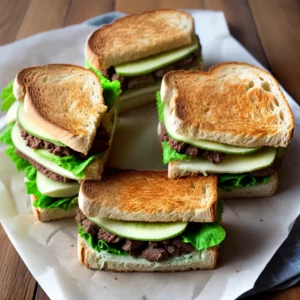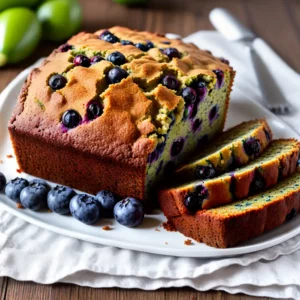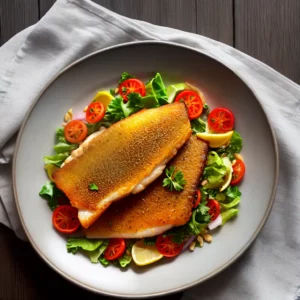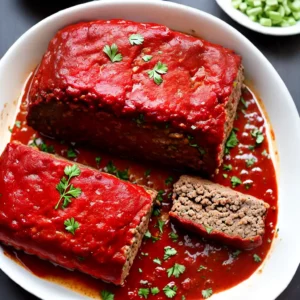How to Cook Mushrooms Like a Chef (Step-by-step Guide)
Did you know that an amazing 5.1 billion pounds of mushrooms were eaten worldwide in a recent year? With mushrooms being so popular, learning how to cook mushrooms like a pro is something many home cooks want. The trick to making perfect mushrooms isn’t just the recipe. It’s also about the techniques chefs use. In this guide, we’ll explore how to make mushrooms tasty and golden. I’ll take you through each step to sauté mushrooms perfectly. Also, you’ll get some special culinary tips to improve your cooking.
We’ll skip the mistake of washing mushrooms, which usually makes them wet and soggy. Instead, I’ll show you a method using a dry pan that makes them nicely browned. It’s important to know the right order to add ingredients. This can really change how your mushrooms taste and feel. So, let’s learn the right way, with plenty of flair.
Key Takeaways
- Understanding the significance of global mushroom consumption and its impact on culinary practices.
- The importance of mastering dry-pan techniques in achieving the perfect sauté.
- Leveraging chef-inspired methods for unlocking mushrooms’ full flavor potential.
- Identifying proper ingredient sequencing to maintain mushroom texture and taste.
- Benefiting from step-by-step guidance for cooking perfect mushrooms every time.
Unlocking the Secrets to Perfect Mushrooms
I’m excited to share with you unlocking cooking secrets after many hours of practice. I’m here to talk about mushroom preparation secrets that will make your cooking better. You’ll learn to handle, cook, and present mushrooms with a fail-proof mushroom recipe.
Mushrooms taste complex and feel meaty, fascinating many cooks. They need special care to really stand out. First, choosing the right skillet is crucial. A large skillet prevents overcrowding and steaming, allowing mushrooms to brown perfectly.
Care for your mushrooms by using a damp paper towel. Avoid washing them directly under water. If mushrooms absorb too much water, they won’t sear nicely. So, it’s best to avoid soaking them entirely.
Heat your skillet to the right temperature before adding mushrooms. Dry sautéing them is a great way to get a good sear. This lets mushrooms cook in their own juice, enhancing their taste.
Watching mushrooms turn golden-brown is quite the show. They become deliciously enticing. This transformation is what cooking art is all about.
Mastery in cooking comes from being patient and noticing small things. The real skill lies not in the extras but in getting the basics right. That’s how you make an amazing mushroom dish.
Here’s a comparison of different methods for cooking mushrooms. Each step is important for great flavor and texture.
| Common Mistakes | My Fail-Proof Tips |
|---|---|
| Washing mushrooms under running water | Cleaning with a damp paper towel |
| Overcrowding the skillet | Using a large skillet for even browning |
| Adding oil/butter too early | Starting with a dry pan for natural browning |
| Constant stirring | Allowing mushrooms to brown without disturbance |
Improving mushroom dishes is an exciting process. Each technique you learn makes you a better cook. We start with just mushrooms. By unlocking cooking secrets and caring for the ingredients, we create something special — a dish worthy of fine dining.
A Chef’s Guide to Choosing Mushroom Varieties
Picking the perfect mushrooms is like an artist choosing paint colors. It’s not just about the types of mushrooms. It’s about how their textures and flavors make a dish special. Choosing the right mushrooms, whether wild or shop-bought, changes your cooking.
Understanding Mushroom Textures and Flavors
Mushrooms can feel silky like enoki or chewy like portobellos. In fine cooking, we talk about mouthfeel. This means how food feels in your mouth. A cremini adds richness to risotto, while a light oyster mushroom is perfect in a summer salad. The secret is knowing how mushrooms work with your other ingredients.
Wild vs. Cultivated: Which Mushrooms to Pick?
Should we use wild mushrooms or farmed ones? This question is common in cooking. Wild mushrooms have strong, earthy tastes. Think of morels, chanterelles, and porcinis. They add deep flavor to food. But farmed mushrooms, like white buttons or shiitakes, are also tasty. They are reliable too. Your choice might depend on what’s available, the time of year, or your dish’s needs. Think about these things, and picking mushrooms will be an easy, fun part of cooking.
Cleaning and Prepping Your Mushrooms
When you clean mushrooms, keep them away from water. This keeps their texture great and colors bright. I use a damp towel to gently take off dirt or bits. By doing this, mushrooms get ready to brown nicely instead of just getting soft when cooked.
Talking about mushroom preparation, think about how you’ll use them. For a pretty look, I keep them whole and clean. But, for dishes needing even cooking, like stir-fries, I cut them the same size. This makes sure each bite is well-cooked and tasty.
A well-prepared mushroom not only sings in flavor but also has the perfect bite that elevates it from just an ingredient to the star of the dish.
Having a simple chart for mushroom prep has been super helpful for me. Here’s one I use that makes everything easier:
| Cleaning Technique | Slicing Guideline | Prep Tip |
|---|---|---|
| Wipe with damp paper towel | 1/4 inch slices | Check for and remove any remaining stems or bad spots |
| Brush off dirt with a mushroom brush | 1/2 inch dices | Ensure each piece is similar in size for even cooking |
| Trim dirty end of stem | Whole cap for stuffing | Remove gills if necessary, depending on mushroom type |
Remember these culinary basics for cleaning mushrooms and prepping mushrooms. They lead to perfect dishes. A good start—cleaning and prepping—boosts flavor and dish success. I’ve made memorizing these steps a big deal for cooking.
How to Cook Mushrooms like a Chef (Step-by-step Guide)
Sautéing
- Heat a pan over medium-high heat with butter and a bit of oil.
- Add sliced or whole mushrooms to the pan without overcrowding.
- Cook without stirring for 3-5 minutes until the bottom is browned.
- Stir and continue to cook until all moisture evaporates and mushrooms are golden brown
Roasting
- Preheat oven to 400°F (200°C).
- Toss mushrooms with olive oil, salt, and pepper.
- Spread mushrooms on a baking sheet in a single layer.
- Roast for 20-25 minutes, stirring halfway through, until browned and tender
Grilling
- Preheat grill to medium-high heat.
- Brush mushrooms with oil and season with salt and pepper.
- Grill mushrooms directly on the grates or in a grill basket, turning occasionally, until charred and tender, about 10-15 minutes.
Baking
- Preheat oven to 375°F (190°C).
- Prepare mushrooms with oil, garlic, and herbs.
- Bake in a preheated oven until tender, about 15-20 minutes.
Boiling
- Bring a pot of water or broth to a boil.
- Add cleaned and sliced mushrooms and boil for about 8-10 minutes.
- Drain and serve or use in recipes.
Steaming
- Place mushrooms in a steamer basket over boiling water.
- Cover and steam for about 5-10 minutes until tender.
Frying
- Heat oil in a deep fryer or large saucepan to 375°F (190°C).
- Add battered or breaded mushrooms in batches.
- Fry until golden brown, about 3-5 minutes.
- Drain on paper towels.
Stir-frying
- Heat a wok or large skillet over high heat with oil.
- Add mushrooms and stir-fry with other vegetables and sauces for about 5-7 minutes until cooked through.
Broiling
- Set oven to broil and place a rack near the top.
- Arrange mushrooms on a baking sheet, drizzle with oil, and season.
- Broil for 3-5 minutes per side until charred and tender.
Microwaving
- Place mushrooms in a microwave-safe dish with a bit of water.
- Cover and microwave on high for 2-4 minutes until tender.
Stewing
- Add mushrooms to a stew pot with other ingredients.
- Simmer over low heat for an extended period until all ingredients are tender and flavors meld.
Braising
- Sear mushrooms in a hot pan with oil.
- Add a small amount of liquid (stock or wine), cover, and simmer until tender.
Pickling
- Boil vinegar, water, sugar, and spices to make a brine.
- Add cleaned mushrooms and simmer for 5 minutes.
- Jar the mushrooms with the brine and seal.
Marinating
- Combine oil, vinegar, herbs, and spices in a bowl.
- Add mushrooms and marinate for at least 30 minutes before cooking or serving.
Stuffing
- Remove stems from large mushrooms like portobellos.
- Mix breadcrumbs, cheese, and herbs for filling.
- Stuff mushrooms, drizzle with oil, and bake at 375°F (190°C) for 20 minutes.
Making a pâté
- Sauté mushrooms with onions and garlic until very tender.
- Blend with cream, butter, and seasoning until smooth.
- Chill before serving.
Drying/Dehydrating
- Arrange sliced mushrooms on a dehydrator tray or baking sheet.
- Dry at 125°F (52°C) in a dehydrator or the lowest oven setting until completely dry.
En papillote
- Place mushrooms on a piece of parchment paper.
- Add herbs and seasonings, and fold paper to seal.
- Bake at 400°F (200°C) for 10-15 minutes.
Escabeche
- Fry mushrooms briefly, then marinate in a mixture of vinegar, oil, and spices.
- Refrigerate for at least 24 hours before serving.
Glazing
- Sauté mushrooms until browned.
- Add a mixture of honey, soy sauce, and vinegar.
- Cook until the liquid reduces to a glaze.
Poaching
- Simmer mushrooms in a flavored liquid at low heat until tender.
Sous-vide
- Season mushrooms and vacuum-seal in a bag.
- Cook in a water bath at a controlled temperature (usually around 140°F or 60°C) for 1-2 hours.
Blanching
- Boil water and briefly submerge mushrooms for 1-2 minutes.
- Plunge into ice water to halt cooking.
Making a gravy or sauce
- Cook mushrooms with butter until browned.
- Stir in flour, then gradually add stock or milk.
- Simmer until thickened.
Making a soup
- Sauté mushrooms with onions and garlic.
- Add broth and simmer.
- Blend if desired for a smooth texture.
Making a risotto
- Sauté mushrooms until golden.
- Stir into risotto during the last few minutes of cooking3.
Making a stuffing
- Cook mushrooms with onions, celery, and herbs.
- Mix with breadcrumbs and stuff into poultry or vegetables.
Making a duxelles
- Finely chop mushrooms and cook with shallots and herbs until reduced to a paste.
Making a tapenade
- Blend mushrooms with olives, capers, and olive oil until smooth.
Making a confit
- Cook mushrooms slowly in oil or fat at a low temperature until very tender.
These methods provide a variety of textures and flavors, making mushrooms a versatile ingredient in many dishes.
Mastering the Art of Dry Sautéing Mushrooms
I love cooking mushrooms and have a great tip to share. The dry sauté technique works wonders. It uses no oil but brings out amazing flavors. This method lets the mushrooms’ natural juices shine, giving dishes a better taste.
Why Skipping Oil and Butter Initially is Key
To dry sauté mushrooms right, you need patience. You might want to add oil or butter quickly. But waiting helps the mushrooms release moisture and flavors. This makes them taste deeper and richer.
Letting Mushrooms Release Their Natural Juices
Letting mushrooms release their juices gives a bold flavor. With this sauté method, mushrooms become the highlight. They’re juicy and delicious on their own, no fats needed.
The goal is to create layers of taste that highlight the ingredients’ true nature.
Here’s what I’ve learned:
- Dry sautéing mushrooms changes their texture and flavor in unique ways.
- It makes the mushroom’s natural taste stand out, perfect for many dishes.
For a clear comparison, here’s a table:
| Cooking Method | Flavor Profile | Texture |
|---|---|---|
| Dry Sauté | Enhanced natural mushroom essence | Firm and meaty |
| Oil/Butter Sauté | Richer, often overshadowed by fats | Softer, sometimes greasy |
| Steaming | Mild, subtle | Moist, tender |
Embracing dry sautéing has opened up new flavors and textures for me. It’s a worthwhile kitchen adventure. Here, mushrooms’ natural juices are the stars. And I’m all for it.
How to Cook Mushrooms for Golden Perfection
To cook mushrooms perfectly, you don’t need fancy stuff. Just learn the basics, like searing right. I’ll show you how to get that golden look every time.
Understanding Heat Levels for Optimal Searing
Getting the heat right is very important. Use medium-high heat to get a golden crust. If it’s too low, they’ll get soggy. Too high, and they burn. Finding the perfect setting on your stove is key.
Timing is Everything: When to Stir and When to Let Be
People argue about stirring. But waiting is better. Stir a little at the right time so each piece cooks well. Look for crispy edges before you stir. It’s more like following a beat in cooking.
After they’re golden, add your butter or other flavors. You have to balance heat, time, and stirring. But practicing makes it easier. And the taste is definitely worth it.
Infusing Mushrooms with Aromatic Herbs and Spices
When I think of making my mushroom dishes better, I like to infuse mushrooms with tasty aromatic herbs and special mushroom spices. This makes the flavor deeper and turns a simple meal into something amazing. As someone who loves great food, I find this step makes everything magical.
To add aromatics, I first lower the heat. Then I add a bit of butter, which melts and gets ready to mix with the fresh aromatic herbs I choose. Using fresh thyme, rosemary, or sage makes a big difference. It’s important to add these herbs at just the right time. If you add them too early or too late, they might not taste as good.
Trying different mushroom spices is something I love to do. A little smoked paprika can add a lot of flavor. A bit of garlic powder adds a cozy, familiar taste. It’s key to use these spices gently to keep the mushrooms tasting natural. This way, every bite is a new taste adventure.
Also, how you add the aromatics is very important. I like to mix in the butter first. Then I add the herbs and spices slowly. This lets them warm up and blend their flavors together. My goal is to make every slice of mushroom taste amazing and full of different scents.
Lastly, I tell all cooks to try making their own mix of herbs and spices. Each dish is a story. With every new mix, we can make a simple mushroom dish into something special. Remember, putting your own touch on a dish is what makes it great.
These special mushrooms can be served in many ways. They can go with steak, creamy polenta, or by themselves as a snack. This shows the power of matching flavors well. With some patience and creativity, you can make something truly special.
Making It Your Own: Customizing Mushroom Dishes
Diving into customizing mushroom dishes is exciting. You get to turn a classic into something unique. You can adjust for diet needs, use vegan options, or improve flavors. The choice is yours in mushroom cooking.
Low-salt cooking and vegan alternatives are more than just trends. They are choices for a healthier and more welcoming meal. Mushrooms work well with these choices. They keep the meal delicious.
Dietary Adaptations: Vegan and Low-Salt Options
It’s tricky to cook with less salt, but mushrooms help. They add deep flavors that make up for less sodium. With different herbs and mushrooms’ umami, meals become tasty and heart-healthy. Vegan alternatives fit in easily. Use plant-based butters or oils to keep dishes vegan.
Add-Ins for Enhancing Flavor and Texture
Adding garlic or chili flakes can change mushrooms a lot. It’s fun to mix strong flavors or add soft ingredients like wilted greens at the end. This keeps their gentle taste and feel.
| Ingredient | Flavor Enhancement | Texture Enhancement | Dietary Note |
|---|---|---|---|
| Garlic | Rich, Aromatic | Subtle Crunch | Great for all diets |
| Chili Flakes | Spicy, Warm | N/A | Add to taste, mindful of heat preference |
| Wilted Greens | Earthy, Fresh | Tender | Excellent for vegan and low-salt options |
| Plant-based Butter | Rich, Creamy | Silky Smooth | Vegan friendly |
Customizing dishes in my kitchen opens up creativity. I love sharing my recipes. Seeing others make them their own is the best part. Use flavor enhancement, texture enhancement, or dietary adaptations. Let your taste inspire your cooking.
Navigating Fats: Choosing the Best Oils and Butters
I’ve gotten better at cooking and learned something important. Choosing the right fats can make food taste amazing. Whether you want food to feel indulgent or be healthy, picking the best fats is key. Let’s look at how picking the right fats can make our cooking better.
When to Introduce Butter for a Rich Finish
Adding butter to mushrooms is like a painter finishing a painting. Different types of butter change how mushrooms taste. I use good butter after the mushrooms brown. It makes them taste rich and silky.
Exploring Healthier Alternatives to Traditional Fats
Butter tastes great, but sometimes I use healthier fats for lighter meals. Olive oil is good for your heart. It gives mushrooms a light fruitiness. Coconut oil adds a bit of sweetness. It’s great for vegans. Trying different fats is fun and important for cooking at home.
The Final Seasoning: Salting Mushrooms Like a Pro
When it comes to final seasoning mushrooms, timing is crucial. As a big fan of mushrooms and cooking, I’ve found some pro tips. They focus on when to use salt to make mushrooms taste their best without getting mushy.
To start, knowing when to add salt is key. If mushrooms get salt too early, they can turn soggy. This happens because salt draws out water. Wait until they are brown and nearly done before adding salt.
Tasting as I cook allows me to use the perfect quantity of salt, ensuring that every bite is a testament to perfectly salting mushrooms.
Here’s how I make mushrooms taste amazing with salt:
- Let the mushrooms cook until they’ve achieved the desired golden-brown crust.
- After they have expelled most of their moisture, that’s the time to season. This is crucial for the final seasoning mushrooms stage.
- I prefer using high-quality salts, such as Redmond Real Salt, because it brings a more nuanced flavor.
- Gently sprinkle the salt; then, stir to evenly distribute it among the mushrooms.
- Finish off with a pinch of salt, if needed, right before serving to boost that umami goodness.
Choosing the right salt type matters for professional seasoning. Whether it’s iodized, kosher, or sea salt, each affects flavor differently.
| Type of Salt | Flavor Profile | Recommended Moment to Add |
|---|---|---|
| Kosher Salt | Clean, straightforward | End of cooking |
| Sea Salt | Briny, mineral-rich | End of cooking or finishing |
| Himalayan Pink Salt | Subtle, earthy | Finishing touch |
The key to better-tasting mushrooms lies in the timing and type of salt. Being patient and thoughtful can elevate mushrooms to culinary treasures. The final seasoning is your personal touch on the dish.
Exploring Diverse Cooking Techniques Beyond Sautéing
As I delve into the culinary world, I find that diverse cooking techniques not only add variety but also enhance the inherent flavors and textures of mushrooms. Moving beyond sautéing, I’ve embraced methods like roasting mushrooms, which imbue them with a delightful crispness, and grilling mushrooms, that instill a smoky essence. Each technique opens a new chapter of taste and texture, meriting exploration.
Roasting, Grilling, and Broiling for Various Textures
When I roast mushrooms, they develop a concentrated flavor and a satisfying chewiness that’s hard to resist. Similarly, grilling mushrooms on an open flame gives a charred, meaty quality. This complements the umami-rich profile of the fungi.
Then there’s broiling mushrooms, which achieves a glorious top crust. This crust is hard to achieve with other techniques. These methods are not just different; they’re transformative.
Creating Richness with Stewing and Braising Methods
In my quest for depth and richness, I find that stewing mushrooms slowly in a broth enriches not just the mushrooms but the entire dish. Whether it’s a hearty soup or a comforting gravy, the mushrooms imbibe the surrounding flavors while contributing their own.
Likewise, braising mushrooms in a little liquid over low heat brings out a tenderness and a luxurious silkiness. This is irresistible in risottos and stews.
| Cooking Method | Texture | Flavor Profile | Best Used In |
|---|---|---|---|
| Roasting | Crisp outer, tender interior | Intense, concentrated | Salads, as toppings |
| Grilling | Charred, meaty | Smoky | Skewers, sandwiches |
| Broiling | Crispy top, juicy | Slightly caramelized | Side dishes, with polenta |
| Stewing | Soft, absorbs flavors | Rich, complex | Soups, gravies |
| Braising | Tender, silky | Deep, mellow | Risottos, stews |
Each technique I explore not only broadens my culinary repertoire but also deepens my appreciation for mushrooms. The key to unlocking the full potential of these earthy gems lies in understanding and applying a range of cooking methods.
From the high-heat excitement of grilling mushrooms to the low-and-slow embrace of stewing mushrooms, it’s an adventure I savor with every dish.
Pairing Mushrooms with Dishes for Ultimate Satisfaction
Mushroom pairing is an art that brings ultimate satisfaction to your cooking. Their earthy flavors boost many dishes. They work well with other ingredients, making your meals more enjoyable.
Complementing Meats, Grains, and Vegetables
Mushrooms add umami to meat dishes, making them taste better. They blend nicely with grains like quinoa, adding nutrition and taste. For veggies, mushrooms are a perfect match, improving both flavor and texture.
Elegant Plating Techniques to Impress
After mastering flavors, focus on your dish’s presentation. Good plating makes the dish more appealing. It makes eating more enjoyable by building anticipation.
| Ingredient | Mushroom Pairing Ideas | Tips for Plating |
|---|---|---|
| Steak | Portobello Caps | Use the portobello as a base and fan the steak slices on top |
| Chicken | Cremini Mushrooms | Alternate pieces of chicken and cremini on the plate for balance |
| Salmon | Chanterelles | Place salmon on a bed of greens and scatter chanterelles around for a pop of color |
| Whole Grains | Shiitake Mushrooms | Layer the grains at the bottom and pile shiitakes on top |
| Mixed Vegetables | Morel Mushrooms | Create a ‘garden’ design by integrating morels with the veggies |
I’m here to help you explore mushroom flavors. Remember these tips but also try new ideas. That’s how you’ll make amazing dishes.
Delving into Advanced Mushroom Techniques
When I think about making my cooking better, I turn to advanced mushroom techniques. These cooking secrets can make a meal special. They bring out deep, complex flavors. Even at home, anyone with love for cooking can learn these tricks. Let me show you culinary skills that will impress everyone at your next dinner party.
Mushrooms can become the star of your dish with the right approach. By using advanced mushroom techniques, I make my meals unforgettable. Whether it’s a tapenade or a melting confit, these methods show off real chef skills. And guess what? You can do it too.
Take the French duxelles, a mix of mushrooms, onions, and herbs. It’s cooked down to a paste. You can use it many ways, like in sauces or as a spread. The secret is in cutting everything finely and letting it cook slowly. This way, flavors become strong and rich.
Mushroom confit is another great method. Mushrooms cook slowly in oil or butter. This makes them silky and full of flavor. It’s a sure way to boost your cooking.
But there’s more you can learn. Here is a table with more advanced mushroom preparations:
| Technique | Description | Suggested Use |
|---|---|---|
| Mushroom Essence | A concentrated broth made from simmering mushrooms and aromatics. | As a base for soups and sauces or to add depth to risotto. |
| Mushroom Powder | Dried mushrooms ground into a fine powder. | To season meats, add umami to veggie burgers, or enrich gravies. |
| Mushroom Pâté | A smooth blend of mushrooms, often combined with nuts or other vegetables. | Served on crostinis or as a filling in pastries. |
| Stuffed Mushrooms | Mushrooms filled with a delectable mixture of cheeses, breadcrumbs, and other fillings. | Perfect as an appetizer or a hearty side. |
These sophisticated culinary methods bring out the best in mushrooms. They can add rich tastes and cool textures to your meals. Try these advanced ways and see how your cooking changes. Curious to see a mushroom confit done right? Check this out:
Storing and Preserving the Essence of Your Masterpiece
Creating a dish that’s beautiful and tasty feels great. But keeping that quality is just as crucial. Whether you cook at home or in a restaurant, knowing how to handle storing mushrooms and preserving mushrooms is vital. This ensures your dishes stay as yummy as when they were made.
Keeping your mushrooms fresh is simple with the right know-how. I’m going to share useful refrigeration tips and freezing techniques. These tips will improve your long-term mushroom storage skills.
Refrigeration Tips for Prolonged Freshness
To keep mushrooms fresh and tasty, use a fridge. Here’s how to stop your mushrooms from spoiling:
- Always use an airtight container to ward off any moisture and contaminants.
- Label your container with the date, keeping food safety in mind as you enjoy your leftovers.
- Stack mushrooms gently to avoid bruising, which can accelerate spoilage.
Freezing Techniques for Long-Term Use
For storing mushrooms longer, freezing is your answer. Below, you’ll find the best freezing mushrooms methods. They help keep the mushrooms in great shape.
| Preparation | Storage | Reheating |
|---|---|---|
| Cool mushrooms before freezing to prevent ice crystals forming. | Wrap mushrooms in cling film and place them in freezer bags to avoid freezer burn. | Thaw overnight in the fridge; reheat gently to maintain texture. |
| Portion your mushrooms before freezing for easy access. | Separate them with parchment paper to avoid sticking together. | For best results, use within a few months to enjoy their natural flavors. |
Conclusion
Cooking mushrooms well is more than just following recipes. It’s about learning the art of cooking. We’ve looked closely at how every mushroom dish can be amazing. This includes choosing the right mushrooms and perfecting dry-sautéing methods. All to make dishes that truly showcase mushrooms.
The key lesson is that timing and precision matter a lot in cooking. We talked about the right heat for searing and adding herbs and spices. These tips help make every mushroom dish special. They inspire us to try new things in the kitchen.
I encourage you to think back on the lessons we’ve shared. Use them to spark your own creativity when cooking. As you cook with mushrooms next, think about the care and passion you put into it. This will help you make truly outstanding dishes. Remember, whether you’re an expert chef or just enjoy cooking at home, let these tips help you. Your mushroom dishes will be full of great flavor and perfect texture every time.
FAQ
How do you properly clean mushrooms before cooking?
Clean mushrooms with a damp paper towel. This removes dirt without soaking them. Soaking can make them soggy when cooked.
What are the keys to achieving perfectly sautéed mushrooms?
Use a big skillet to avoid crowding. Heat it well before adding mushrooms. Don’t add oil or butter at first. Let them brown and release moisture. Then add fat for flavor.
When should you add salt to mushrooms while cooking?
Salt them at the end of cooking. This helps them brown without getting soggy. Taste and adjust seasoning then.
Can you suggest any low-salt or vegan alternatives for cooking mushrooms?
Yes! For less salt, use less or try a substitute. Vegan? Use vegan butter or olive oil instead of regular butter. There are tasty ways to make mushrooms fit your diet.
What other cooking methods can I use for mushrooms, besides sautéing?
Mushrooms can be cooked in many ways. Try roasting, grilling, or broiling them. Or stew and braise for soups and gravies. Each method brings out unique flavors and textures.
How do I store cooked mushrooms, and how long will they last?
Keep them in an airtight container in the fridge. They’ll stay fresh for up to a week. You can freeze them for months. Just thaw in the fridge before eating.
What are some sophisticated mushroom techniques I can try at home?
Try making a duxelles or a mushroom tapenade. These add deep flavor to dishes. They take more effort, but they’re worth it.
How do you preserve the flavor and texture of mushrooms?
Cook them right, like with dry sautéeing, and season correctly. Cool fast after cooking and store in an airtight container. This keeps their quality high.
Are there any tips for plating mushrooms in an appealing way?
When plating, think about the dish’s colors and textures. Add mushrooms to greens or by protein for contrast. Fresh herbs or spices can enhance both looks and taste.
What is the best way to enhance the natural flavors of mushrooms?
Cook them on medium-high for a golden crust before adding flavors. Fresh thyme, garlic, or shallots at the end boost and complement their taste.
Our Friends:
- https://www.inspiredtaste.net/36274/how-to-cook-mushrooms/
- https://themodernnonna.com/how-to-cook-mushrooms/
- https://www.imagelicious.com/blog/how-to-cook-perfect-mushrooms
Related Recipes:
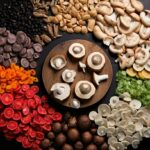 Types of Mushrooms: How to Use Them? (Guide)
Types of Mushrooms: How to Use Them? (Guide)
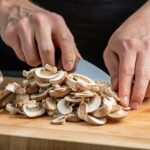 How to Cut Mushrooms? (Perfect Step-By-Step Guide)
How to Cut Mushrooms? (Perfect Step-By-Step Guide)
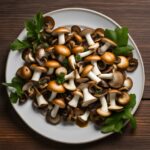 Button Mushroom Substitute: What Can You Use Instead?
Button Mushroom Substitute: What Can You Use Instead?
 How to Cut Mushrooms for Different Dishes
How to Cut Mushrooms for Different Dishes
 Shiitake Mushroom Substitute: Great Options
Shiitake Mushroom Substitute: Great Options
 How to Tell if Mushrooms Are Bad: Storage Tips
How to Tell if Mushrooms Are Bad: Storage Tips
 All About Cremini Mushrooms: Uses, Recipes, and Tips
All About Cremini Mushrooms: Uses, Recipes, and Tips
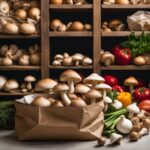 Storing Mushrooms: A Guide for Freshness
Storing Mushrooms: A Guide for Freshness


